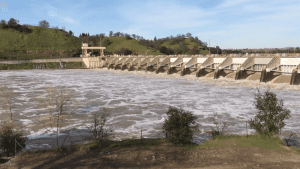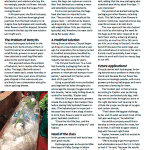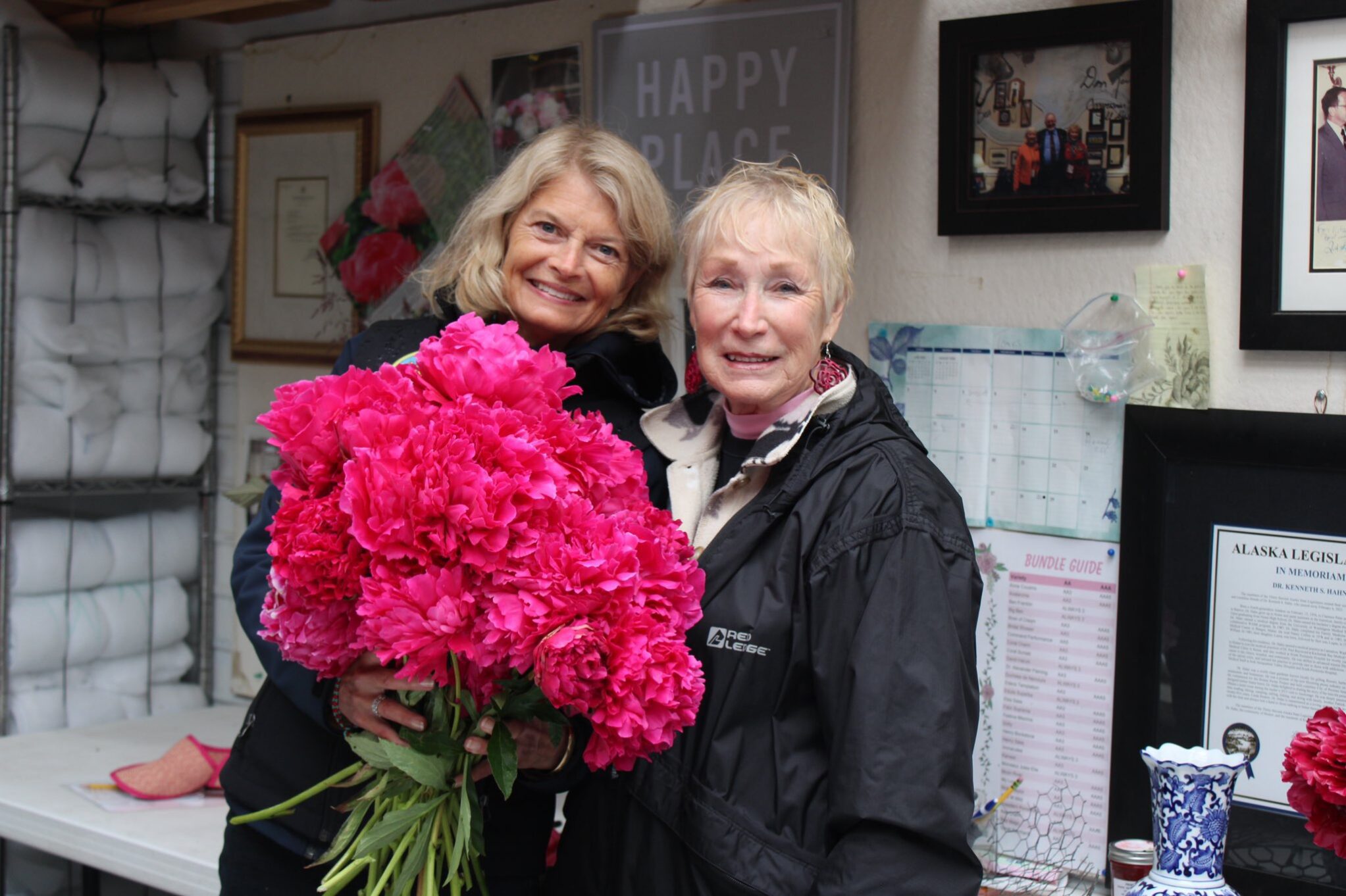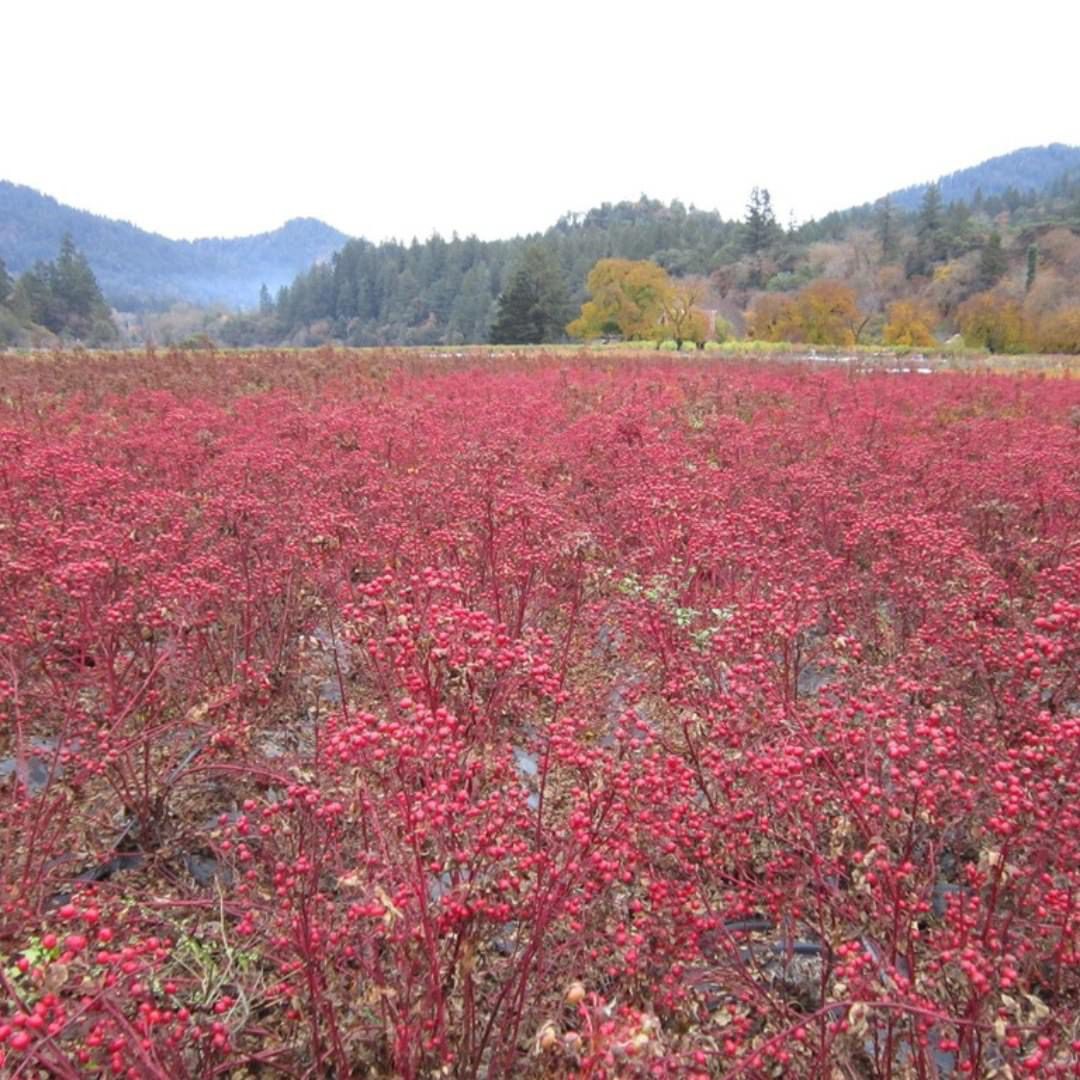
Twenty-foot sheer cliffs are now under water at the Nimbus Dam in Folsom, California, as a result of steady rains the north and central regions in the state. (Video courtesy of Kasey Cronquest, PFCI, CEO of the California Cut Flower Commission).
Intense rain in central and northern California is complicating logistics for some flower growers, but it’s the cloudy conditions that are affecting production, say some area growers.
In Encinitas, Mike Mooney, sales manager at Dramm & Echter, said that cloudy weather — not rain — has decreased gerbera production by about 20 percent.
“That’s a very large financial effect to us, but it’s more to do with the lack of sunlight,” he explained. “Our light meters are reading 80 percent less sun on certain days.”
Flooding in the state, however, “does affect our sales to local outdoor retailers,” Mooney said. “Their purchases are much less, due to the weather.”
Jamie Kitz, key account manager with Sakata Ornamentals, said that some bedding plant growers in Northern California she’s talked with say they are “on hold with their crops … behind in production due to the weather.”
Kitz noted that flooding in northern parts of the state has also slowed shipping, and, she added, all that soggy ground “is not inspiring to garden.”
Michael A. Mellano, vice president of production at Mellano & Company, said conditions have been less severe in southern California than in other parts of the state.
“We’ve had our share of rain and at times it’s been heavy but nothing like northern California,” he said, noting that wet conditions have made for “sloppy” harvesting that’s required extra care. “There are a couple that are lagging behind, but others are ahead … Overall, the rain is very welcome and helping quite a bit, not only replenishing our aquifers but also in leaching out salts that have built up in the soil the last few years. Overall soil health is improving greatly because of the rain.”
Mellano’s relief was echoed by a number of industry members, who said all the rain is helping to ease the strain posed by more than five years of drought conditions in the state.
“Certainly the cloudy days have had an impact on some of our production, but for the most part, farms appreciate the reverse of fortunes when it comes to the water issue,” said Kasey Cronquist, PFCI, CEO and ambassador of the California Cut Flower Commission, who recently blogged about the weather and linked to drought monitoring maps that show the difference in the state from just a year ago.
Monterey County has been “hit with some very strong winds that caused many outages and fallen trees, not to mention having to navigate the roads that were not affected by water,” said Janet Louie, owner of Green Valley Floral in Salinas, California. “We have not seen this amount of rain in a long time.”
Louie said her company has been “adapting to the challenges this kind of weather can bring, but for the most part the pros of all of this rain certainly outweighs the costs. We are grateful for the support we receive from our customers and vendors during these winter storm, situations that call for patience and understanding as we navigate through whatever Mother Nature brings.”
Joost Bongaerts, CEO of Florabundance, expressed a similar sentiment.
“ grateful we get the rains soaking in, increasing ground level water, because we have been in a five-year drought and rainwater is always better than irrigation,” he said, noting that so far the timing of the weather has helped because “there are not a lot of field crops this time of year.”
The amount of rain and its intensity is drawing plenty of national attention and created truly dramatic changes and, in some cases, real dangers for residents.
Cronquist noted that Lake Cachuma in the Carpinteria area, which is home to a number of flower farms, rose about 33 feet between Thursday and Monday, going from 15 percent to 40 percent of its full capacity. The lake is a major source of water for that region.
Meanwhile, more than 180,000 residents had to evacuate from below the Oroville Dam when a damaged emergency spillway and a swollen reservoir raised concerns about a collapse. As The New York Times reported, “crews rushed to fix the damaged embankment at the dam, 70 miles north of Sacramento, and to prepare it for more rain.”
Mellano said he hopes those troubling situations can help the state focus on larger issues, beyond any one weather event and toward longer term solutions for the state’s water.
“It is disconcerting that we are seeing the issues with deteriorated infrastructure at the Oroville dam,” he said, adding that he worries state tax funds have been “diverted away” from infrastructure projects. “It is also sad to see all the water going to waste in this very wet year because we don’t have enough storage capacity in the state.”






